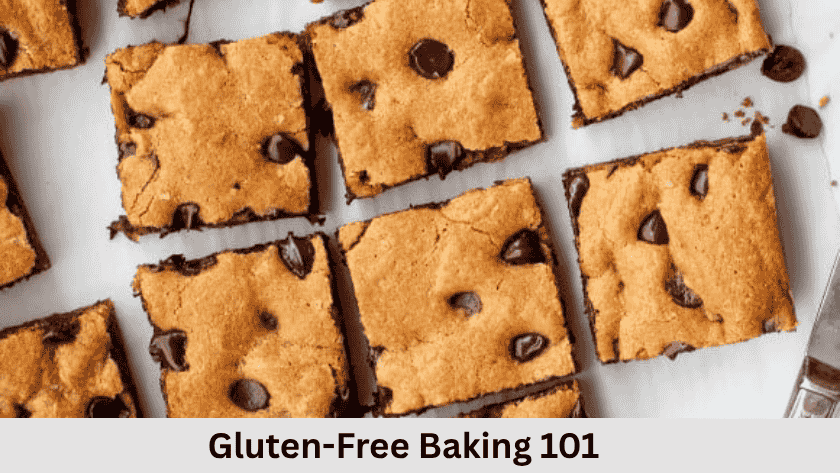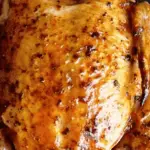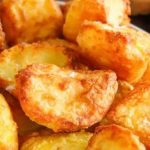Starting with gluten-free baking can feel confusing at first. Maybe you’ve tried a few recipes that didn’t turn out right—too dry, too crumbly, or just not what you expected. I’ve been there, and I know how frustrating that can be.
But here’s the good news: gluten-free baking isn’t as hard as it seems. Once you understand how the ingredients work and make a few small changes, your cookies, cakes, and breads can turn out soft, fluffy, and delicious.
In this guide, I’ll walk you through the basics—what gluten is, why it matters in baking, which flours to use, and what simple tips will help you succeed. If you’re baking for yourself, a family member, or just trying something new, this guide will help you feel more confident in the kitchen.
Let’s make gluten-free baking simple, clear, and fun to learn.
What Is Gluten and Why Does It Matter in Baking?
Gluten is a protein found in wheat, barley, and rye. In regular baking, gluten acts like glue—it holds everything together. It gives bread its stretch, helps cookies keep their shape, and makes cakes soft but sturdy.
When you remove gluten, your baked goods lose that natural support. That’s why gluten-free recipes can sometimes turn out crumbly, flat, or dense.
Many people go gluten-free for health reasons. Some have celiac disease, which means even small amounts of gluten can make them sick. Others may have gluten sensitivity, which causes stomach pain, bloating, or fatigue after eating gluten. And some people just feel better avoiding it.
No matter your reason, knowing how gluten works helps you replace it the right way—and that’s what makes your baking turn out well.

Common Gluten-Free Flours and Starches
Gluten-free baking doesn’t use just one type of flour. It usually takes a mix of different flours and starches to get the right texture and taste. Each one plays a different role, and using a blend gives you much better results.
Here are the most common gluten-free flours and what they do:
Almond flour
Made from ground almonds, this flour adds moisture and a light nutty flavor. It works great in cookies and cakes but can be heavy, so it’s usually mixed with other flours.
Coconut flour
Very high in fiber and soaks up a lot of liquid. You only need a little. It’s great for pancakes and muffins, but must be used with extra eggs or liquid to keep things soft.
Rice flour
A mild flour that’s often used in gluten-free flour blends. It’s great for baking but can feel a bit gritty unless combined with starches or allowed to rest before baking.
Sorghum flour
Light and slightly sweet. It gives structure to baked goods and works well in muffins, breads, and pancakes.
Buckwheat flour
Despite the name, buckwheat has no gluten. It has a bold, earthy flavor. Great in pancakes and rustic breads, but best when mixed with lighter flours.
Now, let’s talk about starches. These help soften the texture and make baked goods less dry:
Tapioca starch
Gives chewiness and helps the dough stretch. It’s often used in bread, pizza crusts, and cookies.
Potato starch
Adds softness and helps cakes and muffins stay moist. It’s a great partner to heavier flours.
Cornstarch
Lightens up your recipes and makes cookies and crusts a little crispy. Also helps thicken batter.
Why use a mix?
No single flour gives the perfect texture. Almond flour is moist, coconut flour is dry, rice flour is neutral, and starches help make things soft. When you combine them, you get baked goods that are light, tasty, and easy to enjoy—just like the real thing.
Binders: What They Are and Why You Need Them
In regular baking, gluten naturally holds your ingredients together. It gives bread its chewy texture and keeps muffins from falling apart. But once you take gluten out, you need something else to do that job. That’s where binders come in.
Binders help your dough or batter stick together and hold shape. Without them, your cookies might crumble, your pancakes might fall apart, or your cake might break when you slice it.
Here are the most common binders used in gluten-free baking:
Xanthan gum
This is the most popular gluten-free binder. It helps create structure and stretch in baked goods. You only need a little—about ¼ to ½ teaspoon per cup of gluten-free flour.
Guar gum
A good alternative to xanthan gum, especially if you prefer something plant-based. It works the same way but is more common in cold recipes like ice cream or pudding.
Psyllium husk
This fiber-rich binder is great for gluten-free bread. It adds elasticity and makes the dough easier to shape. You can use about 1 tablespoon per cup of flour.
Ground flaxseed (flax egg)
Mix 1 tablespoon of ground flaxseed with 3 tablespoons of water, let it sit for 10 minutes, and it becomes a jelly-like mixture. It’s perfect for muffins, pancakes, and cookies.
When do you need a binder?
If your flour blend already includes xanthan gum, you don’t need to add more. But if it doesn’t, don’t skip it—binders make your baked goods softer, stronger, and easier to handle.
Essential Tools for Gluten-Free Baking
You don’t need fancy gadgets to bake gluten-free, but a few simple tools can really help. These basics make it easier to measure, mix, and get better results every time.
Digital kitchen scale
Measuring by weight (instead of cups) gives you more accurate results. Gluten-free flours can pack differently in a measuring cup, so using a scale means fewer baking flops.
Fine mesh sifter or sieve
Helps break up lumps in flour and mix ingredients evenly. This is especially useful when working with almond flour, cocoa powder, or starches.
Silicone spatulas
Soft spatulas are great for scraping bowls and spreading sticky batters. They’re also easy to clean and gentle on nonstick pans.
Nonstick spray and parchment paper
Gluten-free baked goods stick more easily, so always spray your pans well or use parchment paper. This makes it much easier to remove cakes, cookies, and bars without breaking them.
Muffin liners and loaf pans
If you’re baking muffins or bread, liners help prevent sticking and make cleanup easier. A good nonstick loaf pan is a smart investment too.
Optional: Stand mixer or hand mixer
Not required, but very helpful—especially for bread doughs or thicker batters. These tools help you mix everything thoroughly without tiring your arms.
Once you have these tools ready and understand how binders work, you’ll feel more prepared to handle almost any gluten-free recipe. And trust me, the more you bake, the easier it gets.
How to Convert Regular Recipes into Gluten-Free
You don’t always need a special gluten-free recipe to enjoy gluten-free baking. With a few adjustments, you can often turn your favorite regular recipes into gluten-free versions that taste just as good.
Here’s how to do it step by step:
1. Use a gluten-free flour blend
If the recipe calls for all-purpose flour, you can usually replace it with a 1:1 gluten-free flour blend. These blends are made to mimic regular flour and often contain rice flour, starches, and xanthan gum.
Make sure your blend includes a binder (like xanthan gum). If it doesn’t, you’ll need to add it separately—about ½ teaspoon per cup of flour.
2. Add a bit more moisture
Gluten-free flours soak up more liquid than wheat flour. To keep things soft and moist, you may need to add:
- An extra egg
- A splash of milk or oil
- A tablespoon of yogurt or applesauce
It doesn’t need to be much—just enough to avoid a dry or crumbly texture.
3. Let the batter rest
Once your batter or dough is mixed, let it sit for 20–30 minutes before baking. This gives the flour time to fully absorb the liquid and helps the texture turn out smoother and softer.
4. Adjust the baking time and temperature slightly
Gluten-free baked goods sometimes brown faster on the outside but take longer to cook inside. Try lowering the oven temperature by about 10–15°F (5–7°C) and bake a little longer than the original recipe suggests.
5. Don’t expect it to be exactly the same—and that’s okay
Gluten-free baking has its own personality. Some things might be a bit more tender or crumbly, and others might be denser. That’s all part of the process. With a little patience, you’ll find what works best for you.
Top Beginner-Friendly Gluten-Free Recipes to Try First
When you’re just getting started, it helps to begin with simple, forgiving recipes. These are some of the easiest gluten-free bakes that taste great and help you build confidence in the kitchen.
Gluten-Free Banana Bread
Soft, moist, and packed with flavor. It’s one of the easiest recipes to get right and a great way to use ripe bananas. Use a gluten-free flour blend and add an extra egg for moisture.
Simple Gluten-Free Muffins
Mix up the batter, toss in your favorite fruit (like blueberries), and bake. Muffins are quick, easy, and perfect for breakfast or snacks.
One-Bowl Gluten-Free Brownies
Fudgy and rich. You don’t need a mixer—just a bowl and spoon. Try using almond flour or a gluten-free flour blend for best results.
Fluffy Gluten-Free Pancakes
These are a weekend favorite. Use a gluten-free blend, a bit of baking powder, and let the batter rest before cooking. Serve with syrup or fruit for a comforting treat.
Basic Gluten-Free Sandwich Bread
A little more advanced, but totally doable. With the right flour blend and binder (like psyllium husk), you can bake a soft, sliceable loaf at home. Great for toast or sandwiches.
These recipes don’t need fancy tools or ingredients. They’re perfect for practicing the basics and seeing how gluten-free ingredients behave in real baking situations.
Common Mistakes Beginners Make (And How to Avoid Them)
Gluten-free baking can feel tricky at first, but a lot of the problems beginners face come down to just a few simple mistakes. The good news? Once you know what to watch out for, they’re easy to fix.
Here are the most common mistakes and how to avoid them:
1. Using just one type of flour
A lot of people try to bake using only almond flour or only coconut flour—and the results usually aren’t great. Most gluten-free recipes need a blend of flours and starches to get the right texture.
Fix it: Use a trusted gluten-free flour blend, especially one made for baking. These blends combine flours and starches in the right ratio so your bakes turn out soft and balanced.
2. Skipping the binder
Without gluten, baked goods need something else to hold them together. If your cookies fall apart or your cake crumbles, it might be because you didn’t add a binder.
Fix it: Check if your flour blend already includes xanthan gum. If not, add about ½ teaspoon per cup of flour. You can also try psyllium husk or ground flaxseed as natural binders.
3. Not measuring ingredients by weight
Spoonfuls of flour can vary a lot depending on how tightly they’re packed. That can make your batter too dry or too wet, especially with gluten-free flours.
Fix it: Use a digital kitchen scale to measure your flour by grams. It’s more accurate and helps your recipes turn out consistently every time.
4. Forgetting to rest the batter
Gluten-free flours need a bit of time to soak up moisture. If you bake the batter right away, it might come out grainy or fall apart.
Fix it: Let your batter sit for 20–30 minutes before baking. This short rest makes a big difference in texture and helps everything come together better.
5. Expecting it to look or feel exactly like wheat-based baking
Gluten-free dough and batter often feel different. It might be stickier or looser than what you’re used to. That doesn’t mean it’s wrong—it’s just different.
Fix it: Trust the process. Use a spatula instead of your hands when handling sticky dough, and try not to compare it to regular baking too much. Focus on flavor and texture once it’s baked.
6. Using old baking powder or baking soda
Since gluten-free recipes rely more on chemical leavening (baking soda or baking powder), using stale ones can lead to flat or dense bakes.
Fix it: Check the expiration date on your baking powder or soda, and replace them every 6–12 months. A simple way to test baking powder is to stir a little into warm water—if it fizzes, it’s still good.
Once you get familiar with these small but important steps, your confidence will grow—and so will your success in the kitchen.
Pro Tips for Better Results Every Time
Once you’ve got the basics down, these simple tips can help you take your gluten-free baking to the next level. They’re small changes that can make a big difference in how your cookies, cakes, and breads turn out.
Let your batter rest before baking
We’ve mentioned it before, but it’s worth repeating. Letting your batter sit for 20–30 minutes gives the flour time to fully absorb the liquid. This helps remove any grittiness and gives you a smoother, softer texture.
Use room temperature ingredients
Cold eggs, milk, or butter can mess with how your batter mixes. When everything is at room temperature, your batter will blend more evenly, which means better structure and rise.
Mix a little longer than you would with regular flour
In traditional baking, over-mixing can make things tough. But in gluten-free baking, there’s no gluten to overwork. So go ahead and mix thoroughly to activate binders like xanthan gum and get everything evenly combined.
Bake at a slightly lower temperature
Gluten-free baked goods often brown faster on the outside. Try lowering your oven temperature by 10–15°F (5–7°C) and baking a bit longer. This helps the center cook through without burning the top.
Take notes on what works for you
Every flour blend behaves a little differently. Keep a small notebook or digital note with your baking results—what flour you used, how long you baked it, how it turned out. It’s a simple habit that helps you improve faster and avoid repeat mistakes.
How to Store and Freeze Gluten-Free Baked Goods
You’ve put in the effort to bake something delicious—now let’s make sure it stays fresh.
How to store at room temperature
Most gluten-free cookies, muffins, and quick breads can stay fresh at room temperature for 2–3 days. Keep them in an airtight container to prevent drying out. Adding a slice of bread or a damp paper towel inside the container can help maintain moisture.
When to refrigerate
If your baked goods contain dairy, fresh fruit, or are extra moist (like banana bread), it’s safer to keep them in the fridge. Store them in a sealed container and enjoy within 4–5 days.
How to freeze baked goods
Freezing is a great way to keep extras without wasting anything. Here’s how:
- Cookies and muffins: Let them cool completely, then place in a freezer-safe bag or container. Use parchment between layers to avoid sticking.
- Bread or cake slices: Wrap each slice in plastic wrap, then store in a freezer bag. This way, you can grab one at a time when needed.
- Freeze for up to 2–3 months for best taste and texture.
How to reheat
Let frozen items thaw at room temperature or warm them gently in the microwave or oven. For bread or muffins, wrapping them in a damp paper towel while reheating helps keep them soft.
With these simple storage tips, you’ll always have a gluten-free treat ready when cravings hit—without the worry of waste.
FAQs
What is the best gluten-free flour for beginners?
The best gluten-free flour for beginners is a 1:1 gluten-free flour blend made for baking. These blends often include a mix of rice flour, starches like tapioca or potato, and binders like xanthan gum. They’re easy to use and a great starting point for replacing regular flour in your favorite recipes.
Why are my gluten-free baked goods dry or crumbly?
This usually happens because gluten-free flours absorb more liquid than wheat flour. To fix it, try adding extra moisture—like an extra egg, a spoonful of yogurt, or a bit more oil. Also, make sure you’re using a flour blend and a binder to help hold everything together.
Do I always need xanthan gum in gluten-free baking?
You need a binder in most gluten-free recipes to replace the structure that gluten provides. Xanthan gum is the most common, but if your flour blend already includes it, you don’t need to add more. Alternatives like guar gum, psyllium husk, or flaxseed also work, depending on the recipe.
Can I turn any regular recipe into a gluten-free one?
Yes, you usually can—but it takes a few adjustments. Use a gluten-free flour blend, add a binder if needed, increase the moisture slightly, and let the batter rest before baking. You may also need to bake a little longer at a slightly lower temperature.
Final Words
Gluten-free baking might seem a bit different at first, but it doesn’t have to be hard. Once you understand how the ingredients work and make a few small changes, it becomes just as fun and rewarding as traditional baking.
Start simple, be patient, and don’t stress if every batch isn’t perfect. With practice, you’ll find your rhythm—and your favorite go-to recipes. And soon enough, gluten-free baking will feel completely natural in your kitchen.




